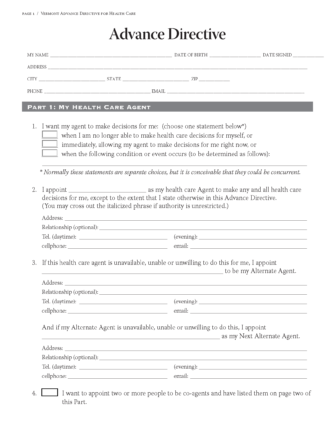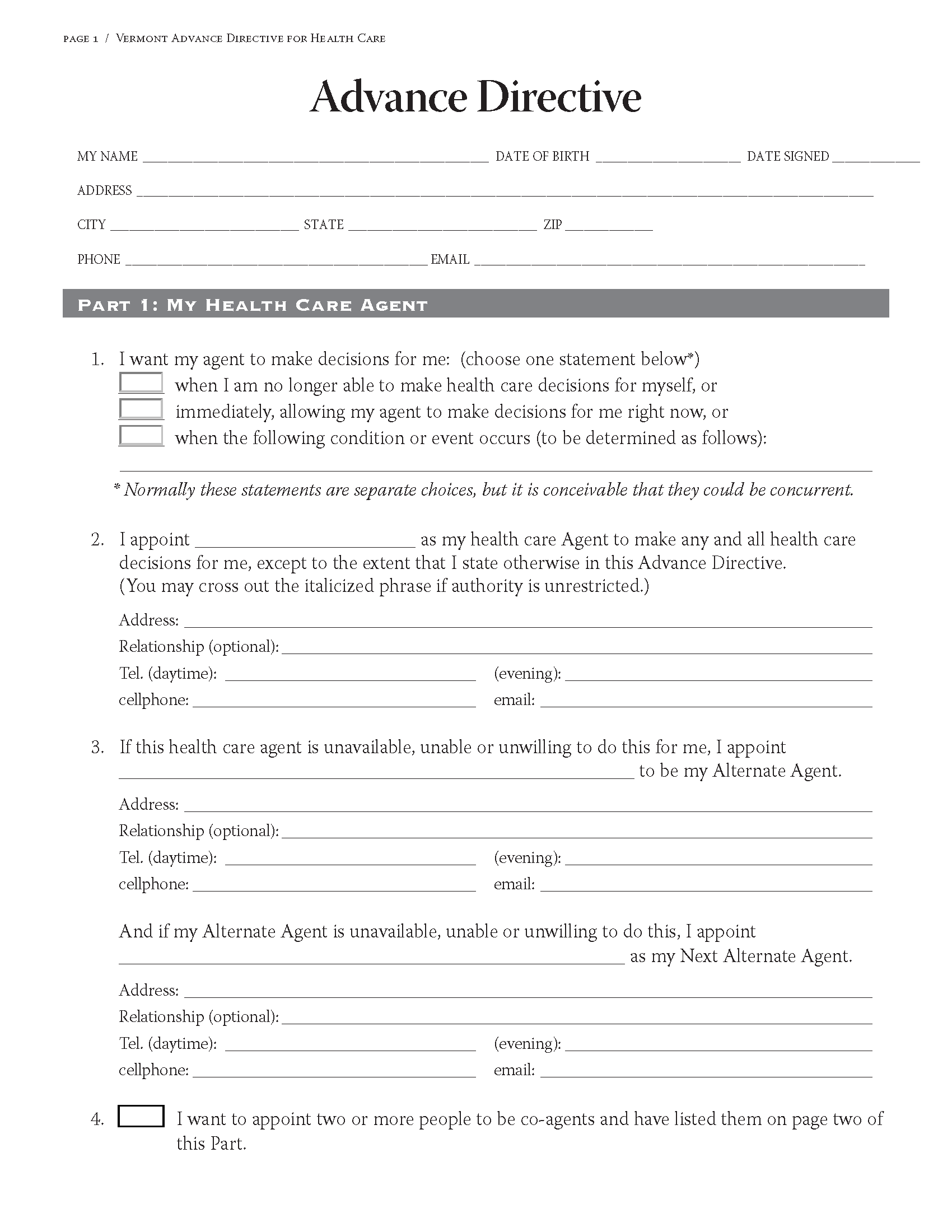Signing Requirements
An advance directive is valid if signed by two witnesses aged 18 or older.[1] Witnesses cannot be a family member or the principal’s agent.
Advance Directive (Preview)
Revocation
If the principal is involved in a legal action such as divorce or a restraining order, the opposing party’s authority as their agent is revoked.
Registering
Filing an advance directive is not mandatory and free for Vermont residents.[3]
To file an advance directive, individuals may complete the Registration Agreement and send both documents via email to VADRSubmissions@uslwr.com or by post to:
Vermont Advance Directive Registry (VADR)
PO Box 2789
Westfield, NJ 07091-2789

